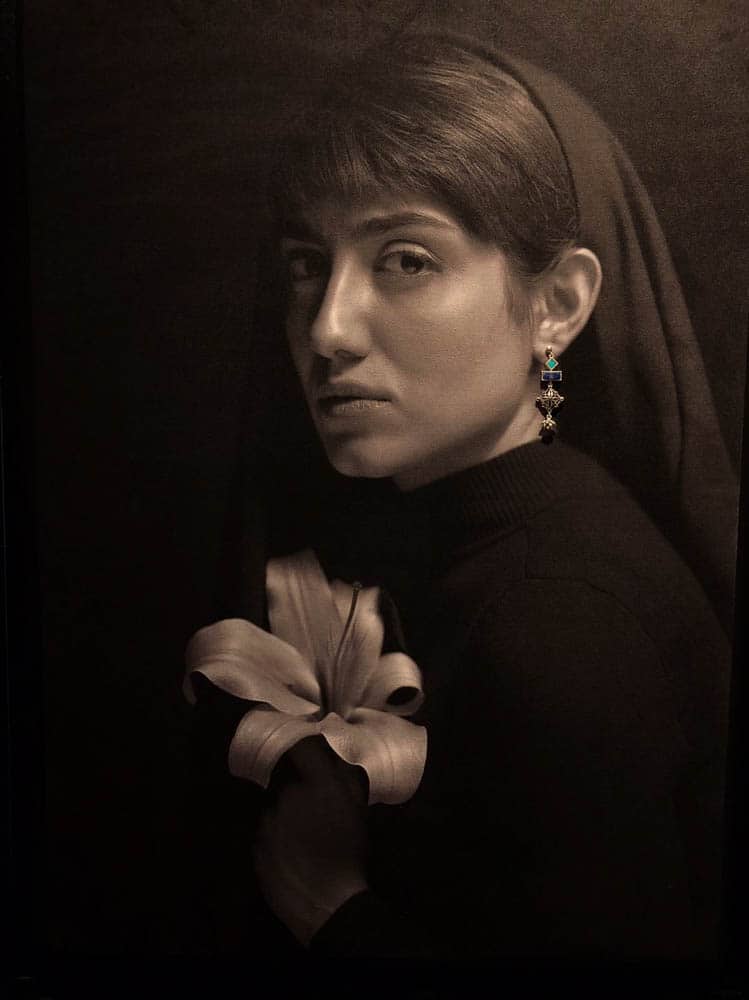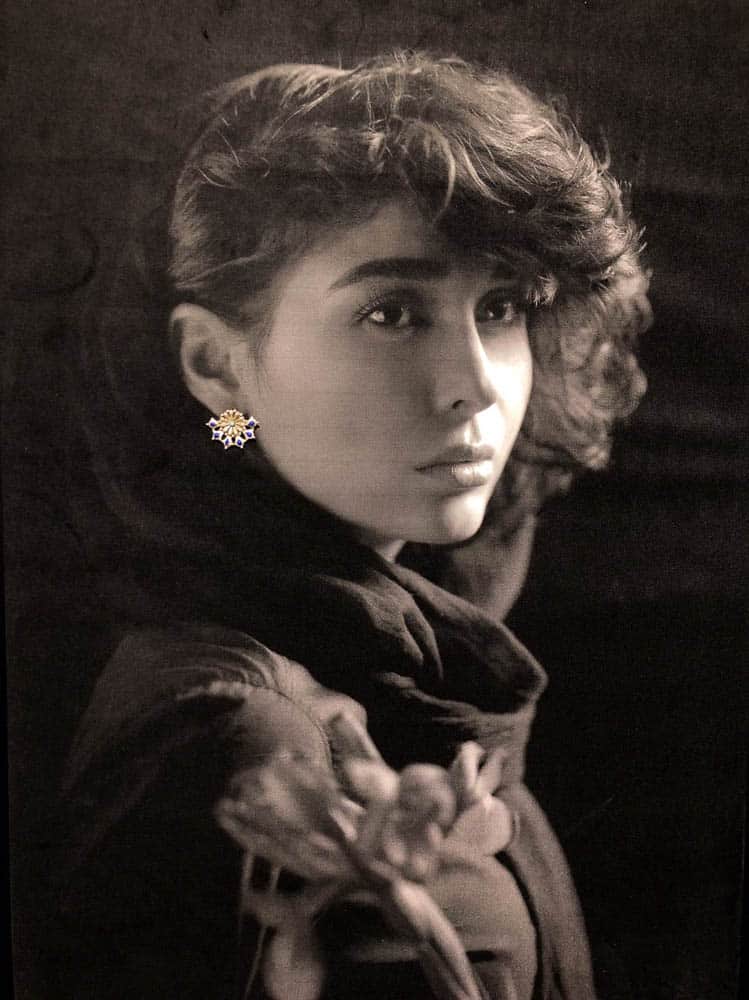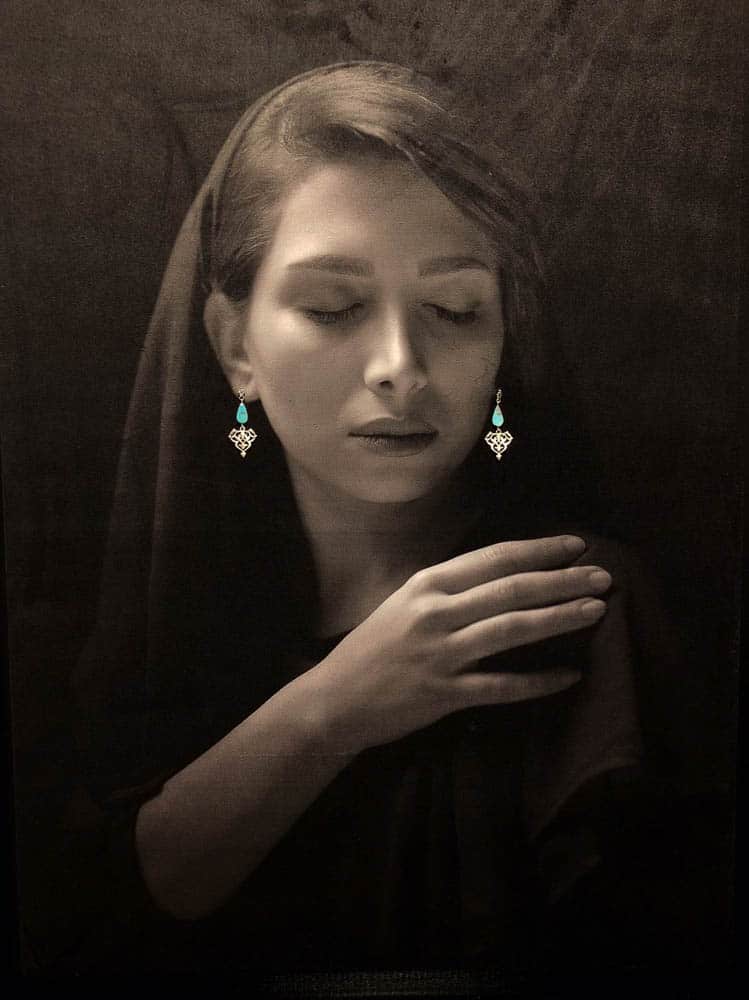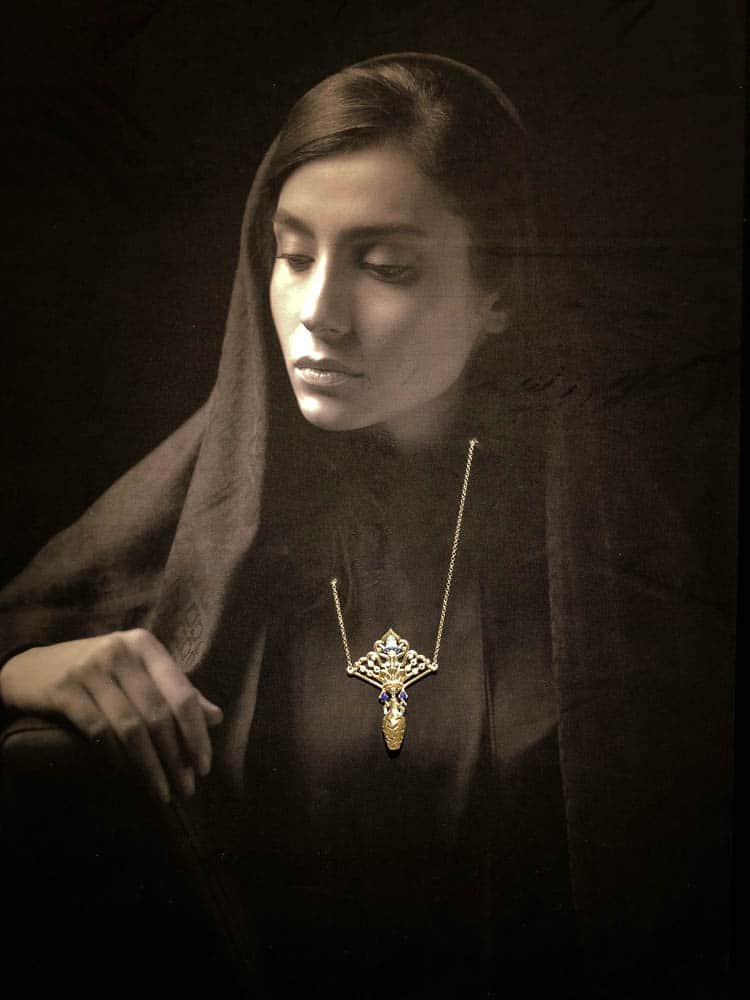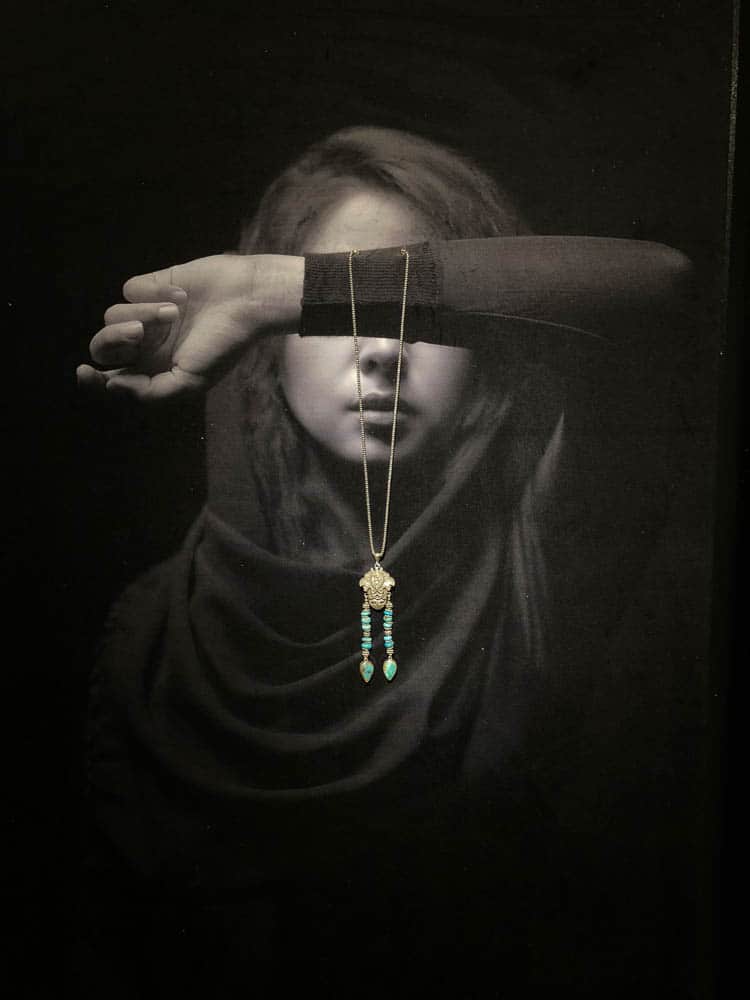Global art jewellery is undergoing a Renaissance as non-Western artists are using this modern medium to renew past layers of their culture. Two Iranian artists are at the forefront of this. A recent exhibition of Ailin Abrisham and Baharak Omidfar give presence to the ancient goddess Anahita.
Ailin Abrisham
The thematic issue and meaning are important parts of the art school of the modern world, in which the content and form are intertwined inseparably. The knowledge of the motif (Iconography), which deals with separation and recognition of the meaning of the artworks, and is used in the semantic studies to decode the hidden meanings of artworks, has been found some adherents among Iranian artists these days. The artists create a new and innovative way to present their work by leaning on valuable Persian culture and art.
Ailin Abrishami, our young and creative designer, who has a B.A in Handicrafts – Jewelry Design and an MA in Art Research, has designed precious and special jewellery by relying on iconology art. She has been using the knowledge of the motif to create the designs which describe valuable hidden stories from original Iranian culture. These handmade designs will be helpful to compensate the thematic and semantic deficiencies of the modern art in our country. Moreover, her efforts to represent the literary symbolic motifs through the form and shape indicate that Ailin Abrishami has wished to preserve, revitalize and strengthen national and cultural virtues relying on epic poetry, formation and jewellery making art. Her innovation is the signs of the commitment of this young artist to the arts and cultures of predecessors of Iran and the development of this culture. “I have designed this collection named Dark Blue Flowers. This concept is about getting help from the pure, gallant and beautiful Anahita, due to the lack of culture in the current era. Lotus which is the sign of the Anahita Water Goddess, has separated from its root and origin and has set apart from the water. I have been inspired by Anahita motifs and Lotus Flower to design my jewellery and combine it with photographs which express the general meaning of the subject and attempts to revive the lost mythological concepts.”
Instagram – @ailinabrishami
Baharak Omidfar
- Baharak Omidfar, Fairies of the Golmarg (The Death Flower) Valley, 2017
- Baharak Omidfar, Fairies of the Golmarg (The Death Flower) Valley, 2017
- Baharak Omidfar, Fairies of the Golmarg (The Death Flower) Valley, 2017
- Baharak Omidfar, Fairies of the Golmarg (The Death Flower) Valley, 2017
Fairies of the Golmarg (The Death Flower) Valley
“Golmarg Valley” is the name of a myth. In Sampinge story by Sadeq Hedayat, the myth is repeatedly retold by Padma, Sampinge’s mother, to her. Padma means water lily and Sampinge means a yellow flower with a pleasant odor and scent. Both of them are Sanskrit words.
Golmarg valley is the name of a land replete with beautiful flowers with pleasant scents the inhalation of which is the only source of the sustenance to the astral creatures living there like children free of the hard works, griefs and restlessness of the mortal man. The life of this nation is full of attractions and beauties. Their daily activities encompass expressing love and playing music, reciting poetry and construction of temples with such materials as jade, ruby and topaz.
The reason why the valley has been termed Golmarg is that when the white men arrived at India, they built a factory that produced pleasant fragrance with a deep scent of the flowers’ extracts by means of distillation devices. The scent, dispersed in the air, was not in compliance with the sensitive sense of smell of the Fairies residing in Golmarg Valley and these astral creatures all perished.
Every time that Sampinge hears the story from her mother Padma, she imagines every word in her mind in a magical state that influences her very intensely. During the course of the story, Sampinge makes conclusions based on the events that happen to her and, in the end, she becomes trapped in a cul de sac at which time she finds life intolerable.
At this time, she, incumbent, stares at the deep water in the lake and a Padma flower, an Indian white water lily, draws her attention. Subject to the calm environment and the scents emitted from the flowers and she inhales them, she remembers the miraculous land of Golmarg. Suddenly, due to the unnatural interference of the images of an eternal memory, she sees the curtain pulled away and her soul, that has been softened and rendered astute as a result of isolation, takes a faster pace and sees a life that seems to her as if it is her own and that she had been living with the astral creatures.
She finds herself in an unperceivable rapture and feels a special kind of zeal in herself as a result of which she accepts a special mission in which she can even be faced with death. Water lily is a symbol of enlightenment of the heart that is turned into a pure intellectual quintessence looking like a brilliant ether. She, on a humid and cold morning day, finds Golmarg Valley in the figure of a chaste maiden and settles down in the bosom of the Fairies in Golmarg valley and gets rid of the pains and suffering.
Fairies, as introduced in ancient Iranian stories and narrations, are the womanish and fertile exemplary personalities and this ethereal creature is the very continuation of the Iranian Anahita, the goddess of waters, source of creation, prosperity and water and a symbol of purity and cleanliness. Due to the close relationship between the goddess, Anahita, with the water, the water lily that is always rooted in water is a symbol of Anahita.
For such reasons as the circularity of the flowers, fruits and leaves of water lily, it is considered as well a symbol of perfection. The flower is also closely associated with Mithraism. Iranian myths and stories have a lot in common with the Indian’s, including water lily that is called Padma in India. The other objects with which Anahita is symbolized are pot, pomegranate, pigeon, star, sun, Shah Abasi flower, snake, ram’s horn and moon.
The fairies of Golmarg Valley are displayed as astral creatures in that pleasant and ideal and illusory space, manifested in the face of mythical women along with signs and symbols of Anahita and the other flowers from many kinds, especially water lily. Supported by the appearance descriptions of Anahita as presented in Avesta and according to the enormous use of the jewelries and gems in a beautiful and abundant manner, the fairies of Golmarg Valley have been depicted as art jewelleries.


